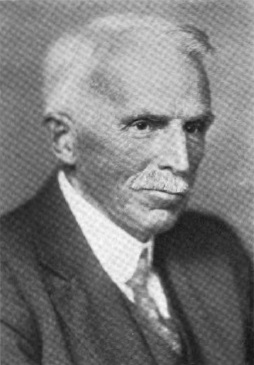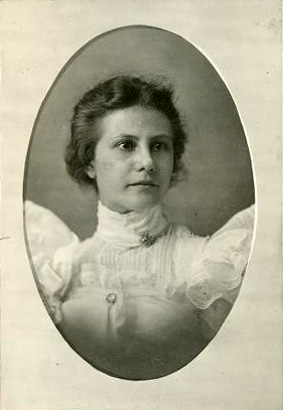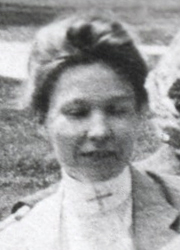
Edward Palmer was a self-taught British botanist and an early American archaeologist.

Joseph Nelson Rose was an American botanist. He was born in Union County, Indiana. His father died serving during the Civil War when Joseph Rose was a young boy. He later graduated from high school in Liberty, Indiana.

Elmer Drew Merrill was an American botanist and taxonomist. He spent more than twenty years in the Philippines where he became a recognized authority on the flora of the Asia-Pacific region. Through the course of his career he authored nearly 500 publications, described approximately 3,000 new plant species, and amassed over one million herbarium specimens. In addition to his scientific work he was an accomplished administrator, college dean, university professor and editor of scientific journals.

Orator Fuller Cook Jr. was an American botanist, entomologist, and agronomist, known for his work on cotton and rubber cultivation and for coining the term "speciation" to describe the process by which new species arise from existing ones. He published nearly 400 articles on topics such as genetics, evolution, sociology, geography, and anthropology.

The University of Florida Institute of Food and Agricultural Sciences (UF/IFAS) is a teaching, research and Extension scientific organization focused on agriculture and natural resources. It is a partnership of federal, state, and county governments that includes an Extension office in each of Florida's 67 counties, 12 off-campus research and education centers, five demonstration units, the University of Florida College of Agricultural and Life Sciences, three 4-H camps, portions of the UF College of Veterinary Medicine, the Florida Sea Grant program, the Emerging Pathogens Institute, the UF Water Institute and the UF Genetics Institute.

Barbara McConnell Barrett is an American businesswoman, attorney and diplomat who served as the United States secretary of the Air Force from 2019 to 2021. She is also an instrument-rated pilot, and cattle and bison rancher.

Paul Carpenter Standley was an American botanist known for his work on neotropical plants.

Frederick Vernon Coville was an American botanist who participated in the Death Valley Expedition (1890-1891), was honorary curator of the United States National Herbarium (1893-1937), worked at then was Chief botanist of the United States Department of Agriculture (USDA), and was the first director of the United States National Arboretum. He made contribution to economic botany and helped shape American scientific policy of the time on plant and exploration research.
Conrad Vernon Morton was an American botanist, who did notable writings on Ferns. He was also a specialist in Gesneriaceae and Solanaceae for the Smithsonian Institution from 1928.

Mary Agnes Chase (1869–1963) was an American botanist who specialized in agrostology, the study of grasses. Although lacking formal education past elementary school, Chase was able to rise through the ranks as a botanist at the United States Department of Agriculture, beginning as an illustrator under the tutelage of Albert Spear Hitchcock, and eventually becoming a senior botanist, overseeing the USDA's Systematic Agrostology department. Chase conducted fieldwork abroad in Europe and South America and published several books, including the First Book of Grasses: The Structure of Grasses Explained for Beginners, which was later translated into Spanish and Portuguese. Additionally, Chase was recognized for her work as an agrostologist with numerous awards, including a Certificate of Merit issued by the Botanical Society of America in 1956. Chase was also an active suffragist and took part in demonstrations organized by the Silent Sentinels, a group established by members of the National Woman's Party. Although Chase's participation in this movement was not always well received by her peers in the scientific community, she nevertheless remained committed to the cause of women's suffrage.

Clara Henriette Hasse was an American botanist whose research focused on plant pathology. She is known for identifying the cause of citrus canker, which was threatening crops in the Deep South.
Sidney Fay Blake (1892–1959) was an American botanist and plant taxonomist, "recognized as one of the world's experts on botanical nomenclature."

Nellie Adalesa Brown (1876–1956) was an American botanist and government researcher. Much of her research focused on plant pathology. While working with Charles Orrin Townsend and Agnes J. Quirk as assistants for Erwin Frink Smith, Brown and her colleagues described Agrobacterium tumefaciens, the organism responsible for crown gall in 1907. They also identified methods of mitigation.

Alice Crane Haskins Swingle (1880-1971) was an American government botanist. With her husband, botanist Deane Bret Swingle (1879–1944), she co-authored the 1928 book A Textbook of Systematic Botany.

Lucia Alma McCulloch was an American botanist and plant pathologist in the United States Department of Agriculture Bureau of Plant Industry. Her work focused on crown gall and gladiolus diseases and pests. A colleague in the department run by Erwin Frink Smith, she also collaborated with botanist Nellie Adalesa Brown.
Alice Carter Cook, , was an American botanist and author whose plant collections are now held by the Smithsonian Institution and the Academy of Natural Sciences of Philadelphia.
Alice R. Tangerini is an American botanical illustrator. In 1972, Tangerini was hired as a staff illustrator for the Department of Botany at the National Museum of Natural History by American botanist Lyman Bradford Smith. Prior to working at the Smithsonian Institution, she received a Bachelor of Fine Arts from Virginia Commonwealth University. As of March 9, 2017, Tangerini remains the only botanical illustrator ever hired by the Smithsonian.

Josephine Adelaide Clark was an American teacher, librarian, and botanist. She was the head librarian of the United States Department of Agriculture from 1901 to 1907. Clark was a part of the second class to graduate from Smith College in 1880 and she conceived the idea of publishing a card index of new genera and species of American plants, which was continued at the Gray Herbarium.
Nowickea is a genus of flowering plants belonging to the family Phytolaccaceae.
Schindleria is a genus of flowering plants in the family Petiveriaceae.














